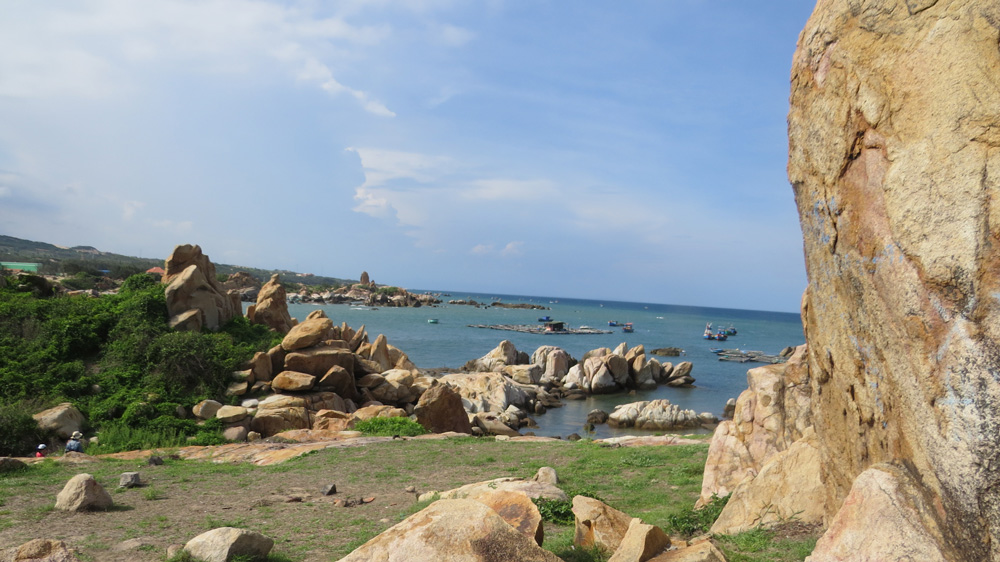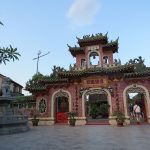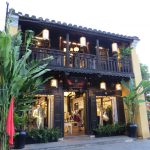For most of tourists visiting Hoi An, taking a walk around the ancient town is the most interesting way to discover its beauty and history.
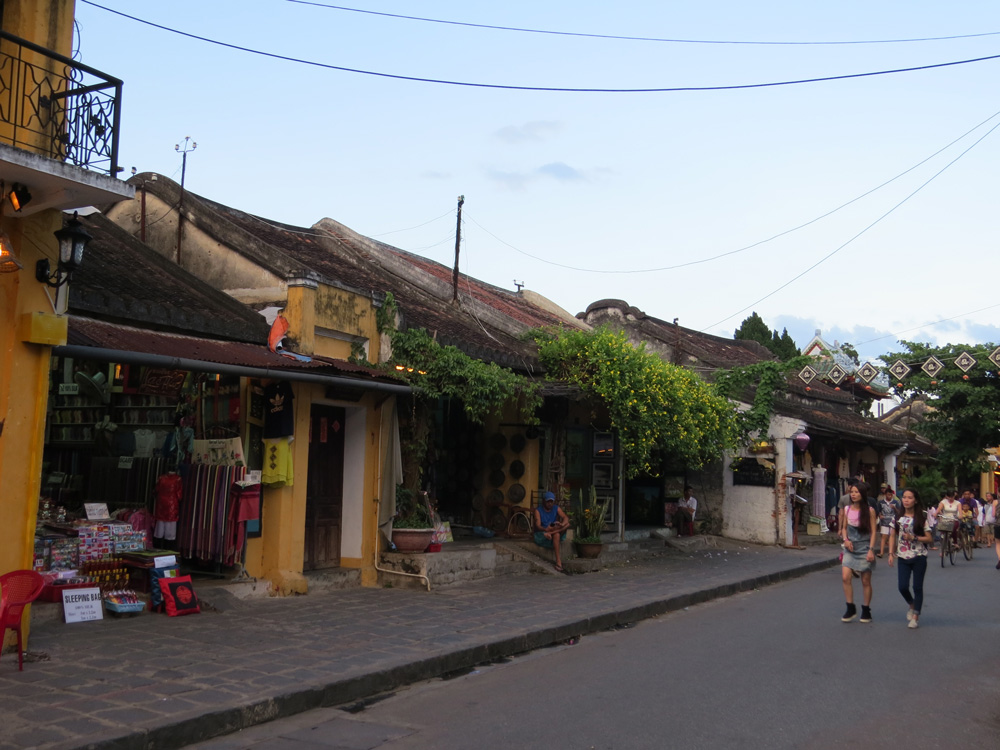
It’s the beautiful afternoon in Hoi An when I started my walking and touched on the first yellow wall of an ancient house near Chua Cau (Bridge Pagoda) or Cau Nhat Ban (Japanese Bridge). The sun shined on moss-grown tile roofs, on carved wooden doors and on old walls through small alleys which created a marvellous space. I liked to see colourful lanterns swaying lightly in the wind and listened sound of a wind-bell tinkling in the air.
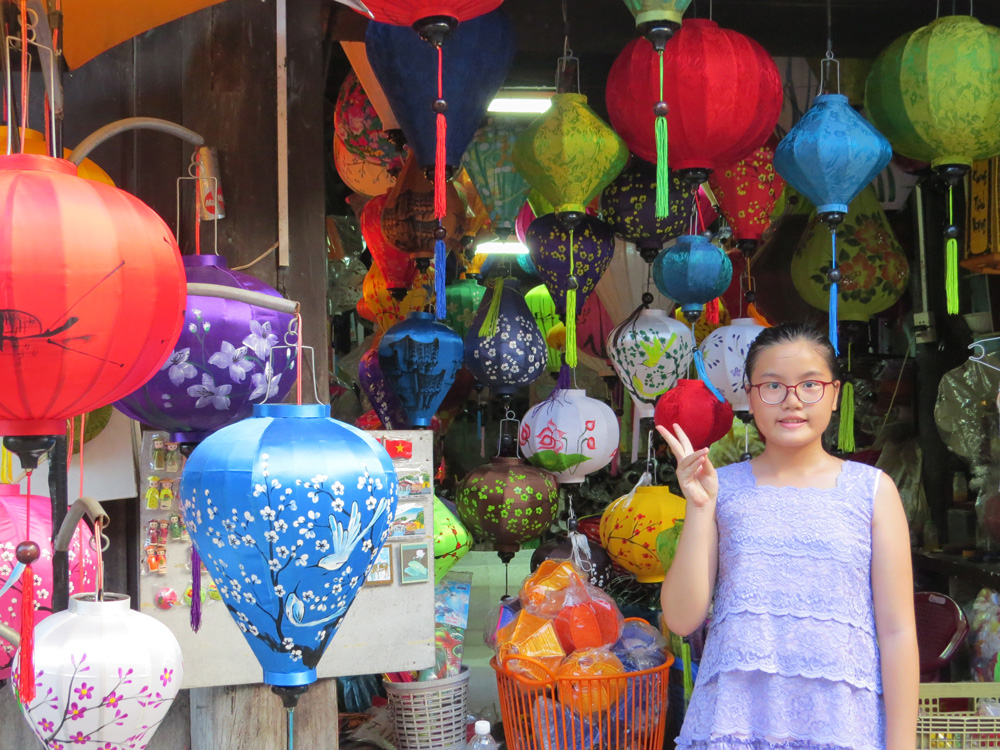
My first stop was Japanese Bridge, a heritage chosen as symbol image of Hoi An. According to a guide book about Hoi An by the author Pham Hoang Hai, this over-400 years-old bridge was built first by Japanese in Hoi An and also restored four times through different periods including in 1817, 1865, 1917 and 1986. I was surprised with its unique architecture: a wooden pagoda located on a bridge. In the past, when Hoi An was ever a busy trade port, Japanese Bridge was a place for boats and ships berthing to avoid storms.

I was in the crowd of tourists walking slowly along the busiest Tran Phu Street in the ancient town. It was interesting to see beautiful pagodas and ancient houses along two sides of the street which were filled with shops, restaurants, cafes and hotels. It is said that you could guest ages of these houses based on their architecture, for example, a house with a floor and wooden walls or two levels, balcony and wooden walls, it was built in the 18th of 19th century; the house with two floor and brick walls, it was built in the end of 19th century and the early 20th century. And if a house features two floors, brick walls in European style, it was built in early 20th century.
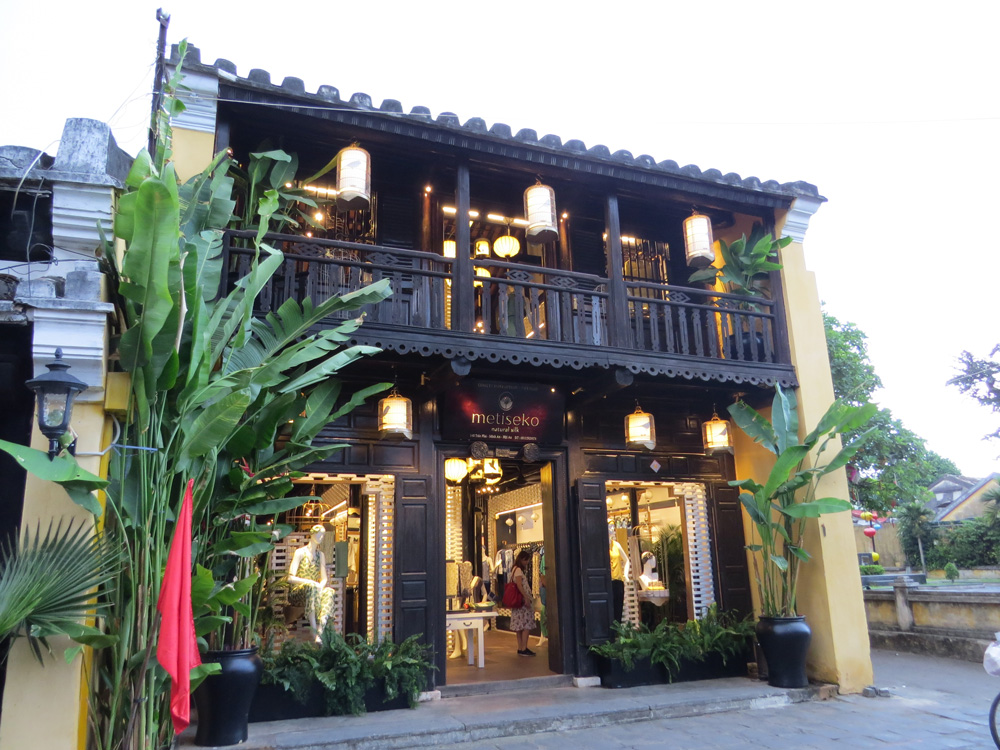
Actually, I learned a lot of fantastic things when visiting an ancient house which was a Chinese Medicine of Duc An. This 180-years-old house was preserved intactly with beautiful architecture and many precious wooden furniture, paintings, horizontal lacquered boards and ceramic wares by its owners from generation to generation. Duc An house was ever a gathering place for many patriots in the region in the patriotic movements and anti French revolts in early 20th century.
Tam, tour guide, showed up the ceiling and expalined that the house had a secret wooden dowel that only its owner knew the exact position. When the dowel was pulled out, the whole of house would be collapsed. All pillars and bars were arranged and connected together scientifically. Mai, a young woman, who lived with her parents in the ancient house inherited from her ancestor told me that in Hoi An a house was not only a property but also a spiritual place where they could live together with her ancestor and feel family traditional value. “I’m very happy to live here”, she said.
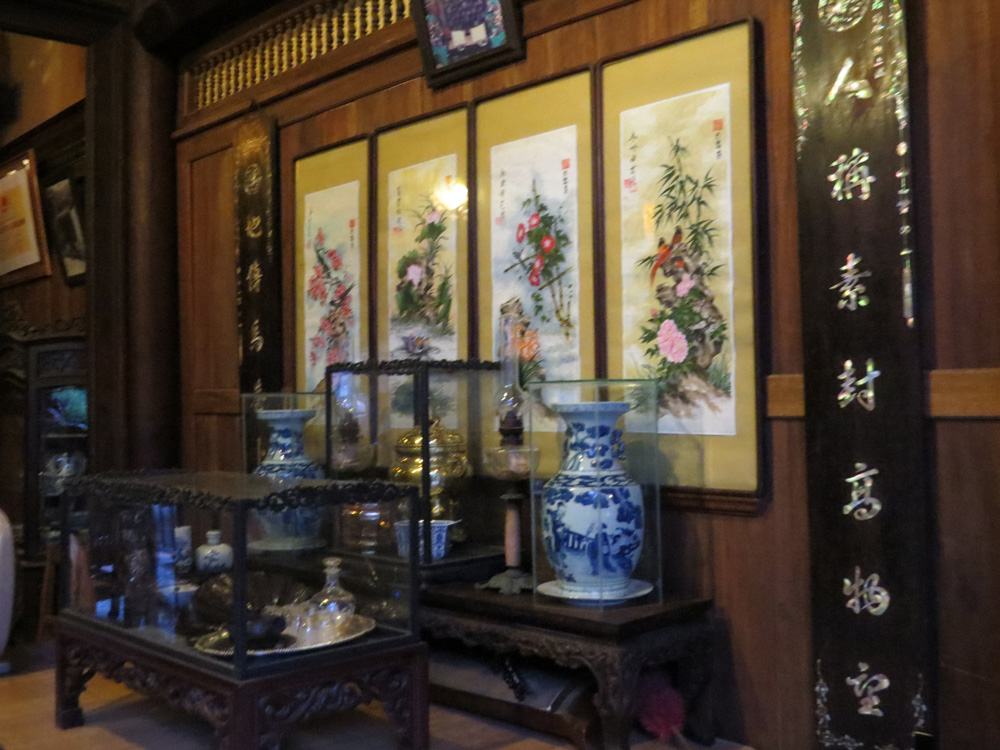
Just some steps from Duc An House, I entered Sa Huynh Culture Museum where displayed the most ancient objects involving in the history of Hoi An land, about 2000 years ago. The ancient people of Sa Huynh civilization is considered as the first owners of the Hoi An trading port, having trading relationships with the people of China, India, and South East Asia. So, it is one of the most important museums in Hoi An.
The museum displays hundreds of objects including jewelry in gold and precious stone, pottery vases, weapons and useful tools in bronze and iron excavated villages around Hoi An and Cham Island. The objects at the museum are considered the most unique collection of the Sa Huynh civilization in Viet Nam. Especially, the museum had rare collection of mộ chum (pottery jars for burials) found from 50 different sites in Hoi An which reflected unique culture in the funerary rituals of the ancient people.

While walking along Tran Phu Street, I saw a small park in a nice location where was established in a modern design with a stone statue of a foreigner. I was curious about this place. Then I knew that it’s the monument of the Polish architect Kazimierz Kwiatkowsky (1944 – 1997) who is called in a friendly name Kazik by local people.
He came to Vietnam in the 1980’s in the cooperative program for the preservation of cultural heritage. He contributed greatly to discovery and research to help Hoi An old town to be listed as a world cultural heritage in 1999. After he died, Hoi An government built this monument in 2007 in middle of ancient town to commemorate him.
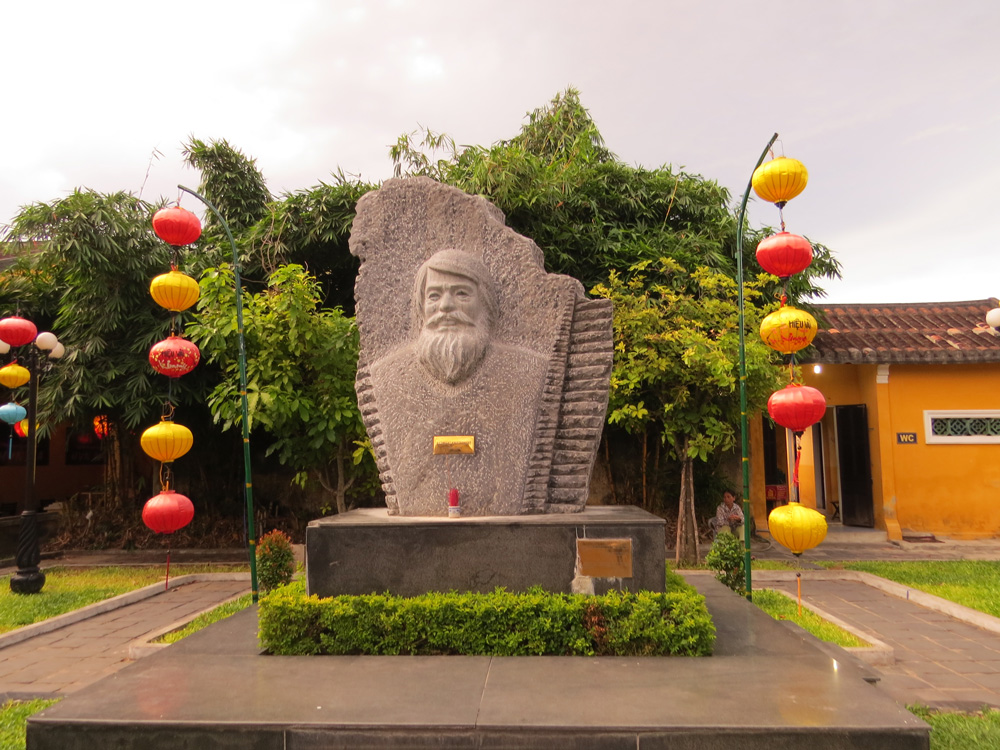
It is said that one of important parts in architecture heritage in Hoi An is ancient pagodas and assembly hall. I chose to visit Phuc Kien Assembly Hall, which was established first in 1690 and restored many times. It is a great example of the Chinese architecture in Hoi An where holds the sea goddess Thien Hau, the goddess Thuan Phong Nhi, who is able to listen to the sound of a ship even at a distance of thousand miles, and the goddess Thien Ly Nhan, who is able to see those distant ships.
I was really impressive with the structure of the gate which featured curving roofs carved with the shape of dragon and the main hall featuring big painting on the ceiling with animal symbols such as dragon, unicorn and phoenix. The hall’s ceiling was filled with a lot of big round incenses attached with small papers writing praying words of visitors hung up.
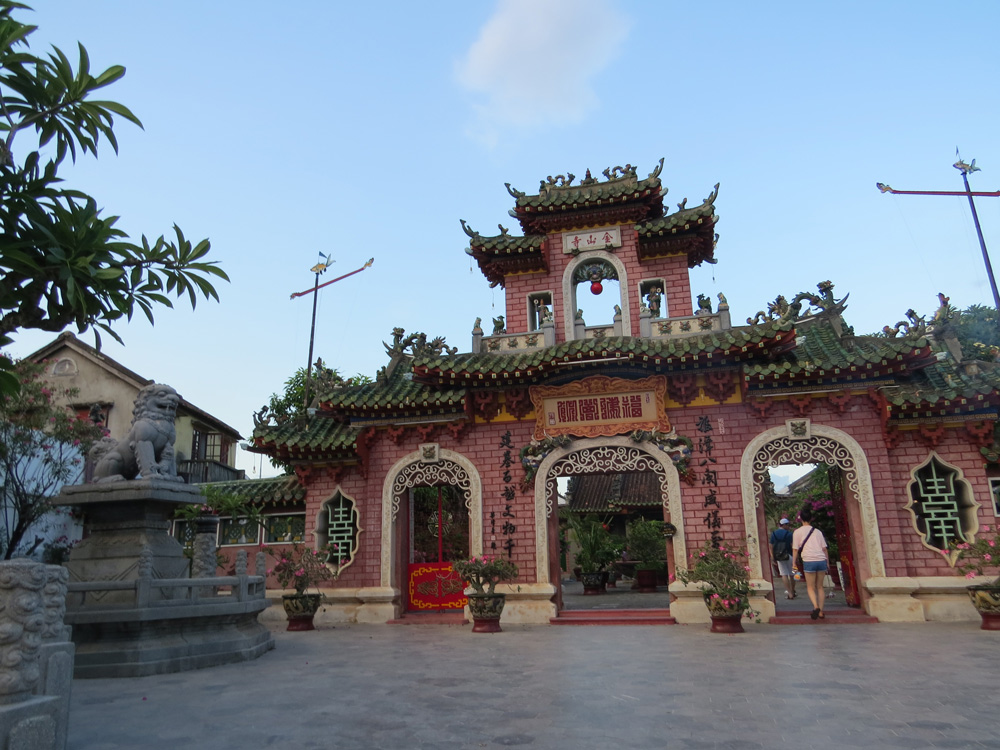
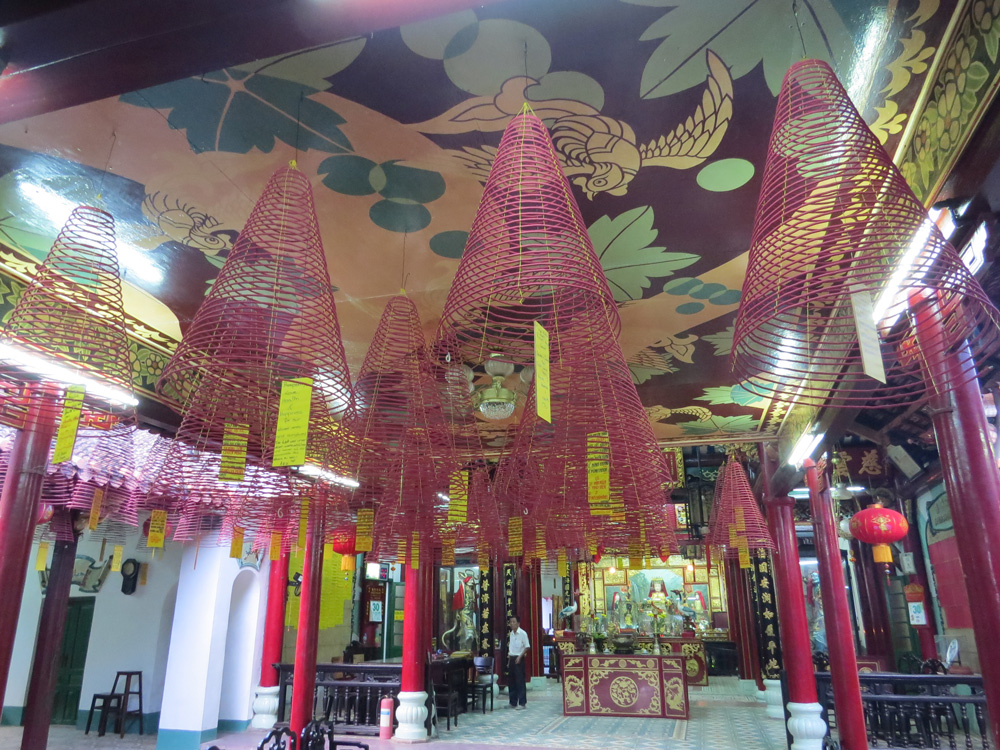
For me, it’s really excited to wander through small streets in Hoi An seeing the relics, enjoying peaceful life of local people or local food at street food stalls. Some times, I observed interestingly a local man sitting on the pavement and arranging flowers and animals from coconut leaves to sell tourists or stopped to see a foreign man performing funny magic on the street.
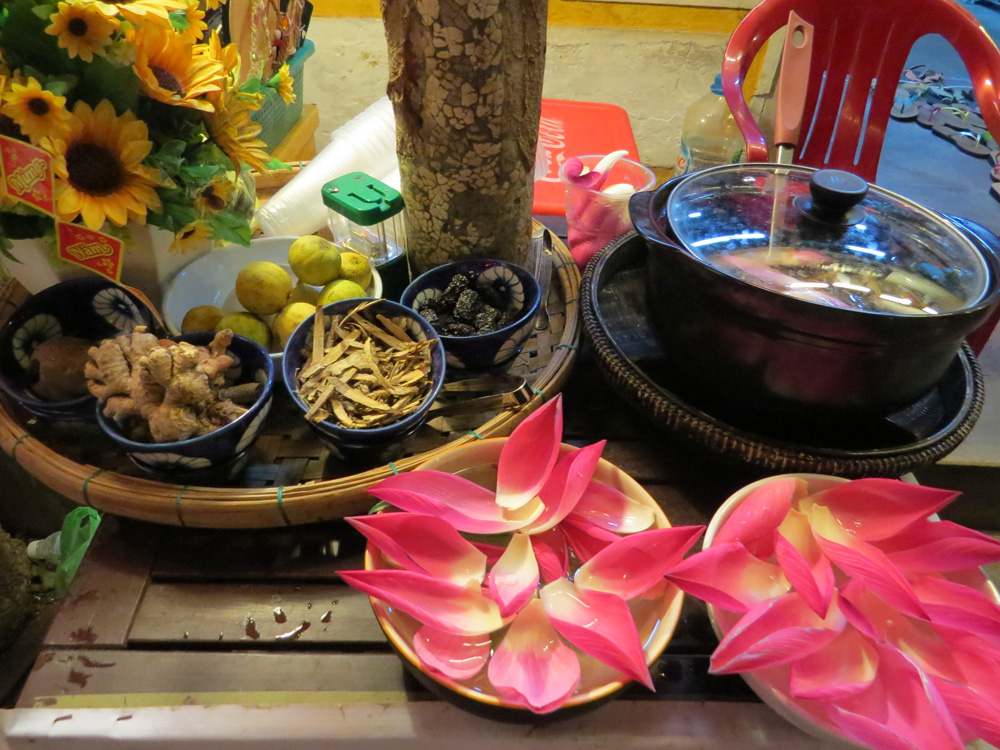
And of course, I couldn’t miss my hobby to do here, shopping so many things I liked such as clothes, scarves, lanterns and souvenir gifts. Then I enjoyed a night in Hoi An by sitting a café by Hoai River, seeing the riverside town lighted splendidly by thousands of colourful lanterns along the streets and floating paper lanterns on the river.
Text and picture: Thanh Van





